
- Home
- Certification
- Denomination
- Grade
- Series
- Type
- $1 Money-crisp Bills (4)
- Banknotes (810)
- Error (2)
- Errors (82)
- Federal Reserve Note (64)
- Frn (3)
- Low Serial Number (8)
- Notes (4)
- Novelty (2)
- Perfectladder (2)
- Replacement Notes (64)
- Sequential Numbers (5)
- Silver Certificate (3)
- Silver Certificates (2)
- Star (19)
- Star Note (3)
- Uncut Sheets (39)
- Other (789)
- Year
2013 $1 ST? R Bill PAIR NY FRB UNC-GEM PCGS 67PPQ DUPLICATE B 0 66 7469 4
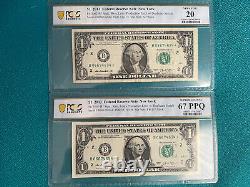
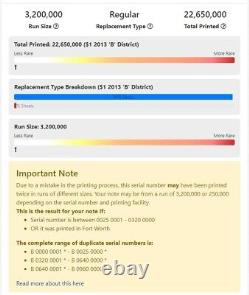
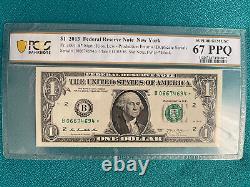
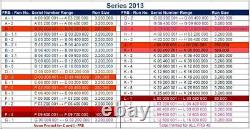
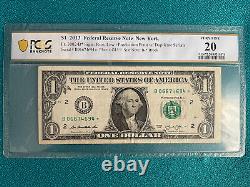
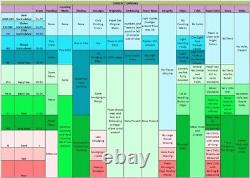
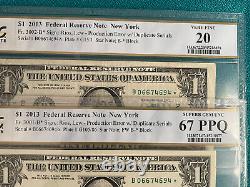
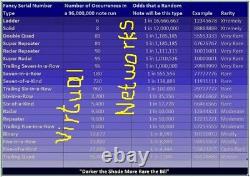
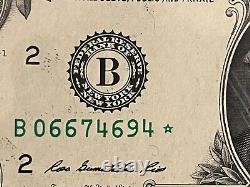
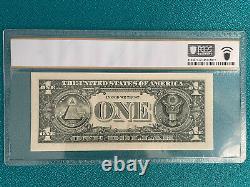
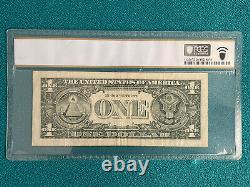
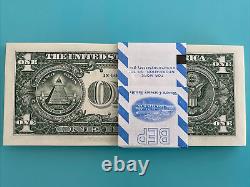


SUPERB GEM UNC 67 PPQ (FW). PCGS CERTIFIED SUPERB GEM UNC 67 PPQ. LOOK & VERIFY or VALIDATE. CERTIFIED ERROR for THE DUPLICATE. MAKE OFFERS, ALL REASONABLE OFFERS WILL BE CONSIDERED.
SET of PAIR - " 66 " IN SERIAL NUMBER. MULTIPLE ERRORs on THE BILL. SERIES 2013 - NEW YORK, NY. B 0 66 7 4 6 9 4? BOTH BILLS (FW & DC).BILLs ON SALE IS THE DUPLICATE PAIR. 1 owner (PROJECT 2013B Verified). SEARCH for "Project 2013" FRB "B" Duplicate.
ALSO AVAILABLE are the FOLLOWING SERIAL NUMBERS. B 0 66 7 4 6 9 0? B 0 66 7 4 6 9 1?
B 0 66 7 4 6 9 2? B 0 66 7 4 6 9 3?
B 0 66 7 4 6 9 5? B 0 66 7 4 6 9 7?
B 0 66 7 4 6 9 8? B 0 66 7 4 6 9 9? OVERALL CONDITION is AT LEAST GOOD to UN-CIRCULATED.100% Legal US Currency from the Federal Reserve Banks. PLEASE CHECK THE PICTURES or ASK QUESTIONS I CAN PROVIDE ADDITIONAL PICTURES OR SCANS. President (1789-97), George Washington, painted by Gilbert Stuart, is currently featured on the obverse (front), and the Great Seal of the United States is featured on the reverse. The one-dollar bill has the oldest design of all U.
The design seen today debuted in 1963 when it was first issued as a Federal Reserve Note (previously, one dollar bills were Silver Certificates). An individual dollar bill is also less formally known as a one, a single, a buck, a bone, and a bill. Approximately 42% of all U.Currency produced in 2009 were one-dollar bills. Usual Characteristics : no flaws or folds, excellent to perfect centering, strong embossing and thick paper. Gem notes are the royalty of currency collecting. They are not often encountered in grades 67 and up, and such notes command very strong prices. Gem notes should be clean with no distractions or folds.
The centering should be within 75% of perfect. The colors and paper quality should be flawless. Unlike coins, a lot of currency is not even printed with the chance of becoming a gem. Usual Characteristics : no folds, less than perfect centering, counting mark or smudge, corner tip fold. Choice uncirculated notes will have no folds that run into the design. They may possess a small corner tip fold. For an otherwise perfect note to get a 63 or 64 it will have centering problems, meaning the margins are lopsided.CRISP UNCIRCULATED (CU) - (59-63). Usual Characteristics: no folds, less than perfect centering, light counting mark or smudge, corner fold or very light fold. A note that has not been released into circulation and is in the same condition as it was first produced. The paper must be firm and crisp, without any creases, folds or tears, and the corners must be sharp and square. ABOUT UNCIRCULATED (AU) - (50-58).
Paper is still crisp and bright and has original sheen. About uncirculated notes run the gamut from two very light folds on the low end, to a flaw so minor that it may barely be noticeable on the high end. In reality AU notes will likely not have seen any real time in circulation. An AU note should be all about eye appeal. One can generally enjoy a full bodied AU even margined note for less than half the cost of its gem counterpart.
EXTRA FINE (XF) - (40-45). Usual Characteristics : 2 or 3 vertical folds, very lightly circulated, very visually pleasing, no discoloration.Paper is clean and bright with original sheen. Tears and stains are not present. Extremely fine notes will likely have seen very little to no actual circulation.
Your standard XF note will have 3 vertical folds, usually from poor storage, or several bends it may have picked up over time. Extremely fine notes should have good color and paper quality. VERY FINE (VF) - (30-35). May have several vertical and horizontal folds as well as slight dirt or smudging visible. No tears on the edges, though the corners are not as sharp as Uncirculated. High grade very fine notes can be a great way to get an attractive original note for a fraction of the price of their uncirculated cousins. If you hold a raw very fine note if should feel strong and thick. It will have noticeable folds but it should be very presentable otherwise. VERY FINE (VF) - (20-25).Usual Characteristics: multiple folds, above average wear, used but fully intact. When looking at a note you think may be a low grade very fine, be sure to look for repairs and tears that may not be obvious on just a casual look.
A low grade very fine note will tend to pancake when held in hand, the original crispiness just will not be there. When seeking rarity you may have to settle for a low grade very fine note. The average note pulled from circulation would likely grade a 20 or 25.
Usual Characteristics : little crispiness, somewhat leathered look, numerous folds, faded colors. Considerable circulation is apparent, with creases, folds and wrinkles visible, and most, if not all, of the crispness is gone.
Edges show evidence of circulation, and there may be slight tears. Some fading of color noticeable, with some staining possible.
A note in fine grade generally has the appearance as if has been balled up and worn in a gym sock for a week and then straightened back out. A fine note will have no crispiness and a leathered look. Expect beat up corners and faded colors in this grade. One positive thing about a fine note is that you generally know what you are getting into, even based on a scan.
VERY GOOD (VG) - (8-10). Usual Characteristics : minor tears, no body, very well worn, not much eye appeal. An obviously well-circulated bank note with much creasing, folding and wrinkling noticeable. Note may be dirty, and corners may show much wear and rounding, and some tears may be present, though no pieces of the note should be missing. A very good note will have more wear and less eye appeal than a fine note, but it will lack a significant flaw that good notes will have.
Generally speaking, a very good note will be dirty but not totally trashed. Usual Characteristics : serious problems - very dirty - missing corners - splitting margins, tears. A heavily circulated note with characteristics similar to Very Good except with more pronounced soiling and considerable wear and tear. Corners of the note may also be missing. Good notes were usually picked out of circulation after many years. Good notes are great if you are trying to get a child in the hobby or if you want to collect as cheap as possible. Counting Marks - very light bends going into the note that aren't folds. Pinches - are similar to counting marks but they occur internally on the note. Smudges - are the result of skin contact to ink surfaces. Originality - means the paper has not been pressed or washed and embossing and paper wave should be present. Embossing - is when the note's printing can be felt on the other side of the note, this should be especially present around the serial numbers and treasury seal. Paper Wave - refers to the light ripples that should go across the top and bottom of a note, this is a result of wet paper drying after the printing process. Tracking information will show when they decide to scan it plus any upload delay where it is applicable. Currency is packed with invoice. INTERNATIONAL BUYERS - Please Note.
